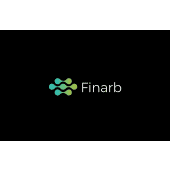INVENTORY OPTIMIZATION
Finarb’s AI enabled inventory optimization models leads to reduced stockouts, low overstocking and optimization of inventory costs
Key Figures from our use case deployment
Finarb’s AI enabled inventory optimization models leads to
30%
REDUCTION IN STOCKOUTS
20%
REDUCTION IN OVERSTOCKING
10%
REDUCTION IN INVENTORY HOLDING COSTS
Business Challenge
Optimizing inventory remains a key pain point for manufacturers. Spike in demand fluctuations, extremely long lead time for raw materials, complexities in supply chain continue to challenge the industry, resulting in potential write-offs due to inventory obsolescence or understocking leading to low order fulfillment and lost revenues. A convergence of these factors has placed significant pressure on inventory optimization and a demand driven supply chain is not equipped to handle such fluctuations.
The need of the hour is an AI enabled predictive model at the core of your inventory management that can accurately forecast fluctuations based on several factors including potential demand, political or environmental conditions and create a connected and truly intelligent supply chain.
Our Use Cases in Inventory Optimization Where AI Delivers The Maximum Value
- Market predictive models
- Monitoring real-time inventory control dynamics
- Inventory forecasting
- Stock monitoring and management
- Optimizing warehouse replenishment
- Supplier risk assessment
- Intelligent procurement
- Logistics route optimization
Outcome: Benefits of AI enabled Inventory Optimization
- Accurate predictions about demand and inventory needs to reduce stockouts and excess inventory. We have been able to show improved inventory accuracy by up to 90%
- Reduced risk of stockouts and overstocking – 30% reduction in stockouts and 20% reduction in overstocking
- Reduced lead times for raw material sourcing by up to 50%
- Lower inventory carrying costs: Reduction in inventory holding costs by upto 10%
- Scalability: to meet the needs of growing demand with requiring additional resources
- Effective management of inventory with fluctuating demand
- Competitive advantage: Through reduced lead times and improved order fulfillment rates
Inventory Optimization Predictive Models Used
- Classification models, anomaly detection models, regression and time series models, deep learning models among others
- Pooling in data from sales, stock levels, customer behavior, also integrated with the company's POS system, allowing real-time tracking of sales and inventory levels
SCHEDULE A MEETING FOR PoC
If you would like to know more or discuss our use cases in detail
